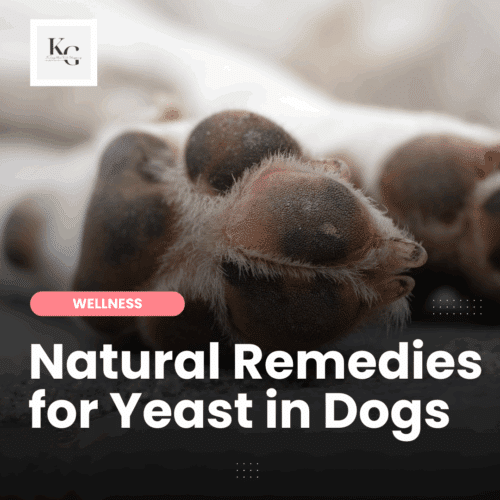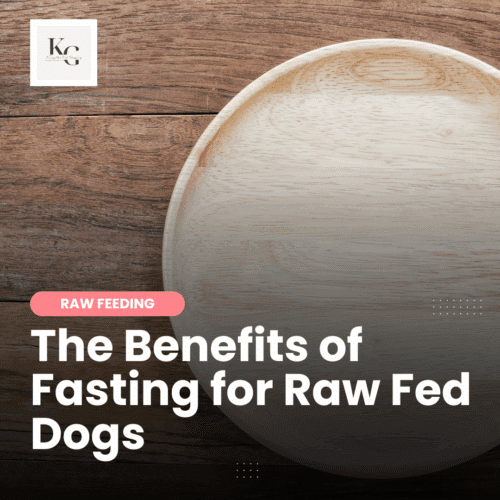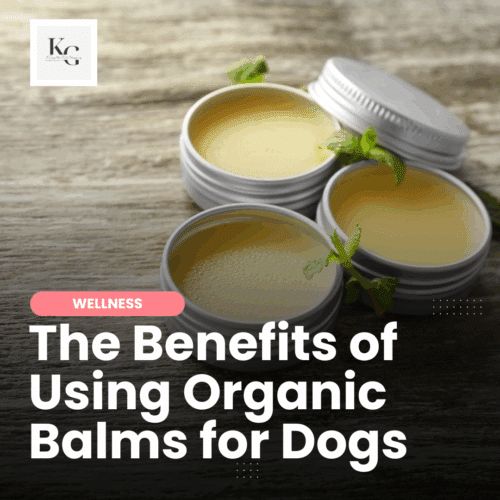Keep the Tail Wagging is supported by pet parents. I occasionally earn a commission (at no additional cost to you) when you click through an affiliate link to one of my favorite products. Thank you for your support. Read More
I transitioned my dogs to a raw food diet in 2013 and began DIY raw feeding the following year. To some pet parents, raw feeding seems complicated; for me, it became easier to formulate a diet that meets my dogs' nutritional needs without supplementation as I learned more about dog nutrition. I prefer feeding whole foods because I believe the nutrients are more bioavailable, and I have better control over what my dogs consume. But, in some cases, a supplement made from whole foods is better – one case is fish and fish oil.
Dogs cannot create Omega-3 fatty acids; they get this important nutrient from their diet. I feed grass-fed beef and pasture-raised chicken eggs, which are rich in Omega-3 fatty acids. But these foods can be expensive, and I don't feed them daily. So, my dogs also enjoy sardines, mackerel, salmon, whitefish, some trout, and Life Line Pet salmon oil products.
But which meets the Omega-3 fatty acid requirements for raw fed dogs?
What are Omega-3 Fatty Acids?
Omega-3s are a group of essential fatty acids that provide several health benefits for our dogs. The three types we read about the most are ALA, DHA, and EPA. ALA (alpha-linolenic acid) is found in plants like chia, flax, and hemp seeds. DHA (docosahexaenoic acid) and EPA (eicosapentaenoic acid) are found in animal proteins and algae.
Dogs can gain Omega-3 fatty acids from plants, but the ALA needs to be converted to DHA and EPA. The conversion process doesn't leave enough DHA and EPA to do the job they're meant to do. Therefore, I prefer animal sources for fatty acids; no conversion is needed.
12 Benefits of Omega-3 Fatty Acids (with Studies)
The following are the benefits of Omega-3 fatty acids for dogs. The studies linked are for humans because canine studies are limited or non-existent.
- cognitive health
- cardiac health
- kidney health
- bone and joint support
- reduce inflammation
- skin and coat health
- reduce allergies
- vision health
- promotes healing
- great for dogs with auto-immune disorders
- great for dogs with anxiety
- may help to fight cancer
Omega-3 fatty acids are a fantastic addition to our dogs' diet, and we shouldn't wait until our dogs are adults to appreciate the above benefits:
PUPPIES: Omega-3 fatty acids are excellent for growing puppies because they support their developing brain and growing bones and boost their immune system to protect them from infections and diseases.
SENIORS: Omega-3 fatty acids help to keep arthritis at bay and reduce symptoms of arthritis while also slowing the aging process and supporting cognitive health. And with cancer rates increasing in senior dogs, Omega-3 fatty acids are a crucial part of their diet.
Raw fed dogs have better access to Omega-3 fatty acids due to the fish and fish oil raw feeders add to their diet. Kibble fed dogs need additional Omega-3 fatty acids to offset the high Omega-6 levels of dry dog food, which can lead to allergies, inflammation, and other issues in dogs.
Fish Oil vs. Fish
According to the American Heart Association, fish oil supplements are a great backup plan when we can't consume enough fish in our diet due to tastes, sensitivities, or sourcing. My dogs don't consume enough fish to meet their Omega-3 fatty acid requirements, so I alternate in a quality fish oil because…
PARASITES: some raw fish contain parasites; in some cases, the parasites can be deadly to dogs. Some raw feeders freeze fish for a week or longer to kill the parasites, while others don't want to take the chance and either cook the fish or avoid fish altogether.
SOURCING: not everyone has easy access to fish for their dogs. And what they do have access to may not be ideal for their dog. For example, a farm-raised fish is lower in nutrients and fatty acids than wild-caught fish.
EXPENSE: at $10 – $15 per pound in some areas, seafood is expensive and not affordable for all pet parents. I purchase fresh fish in bulk for my dogs and watch for sales on canned salmon, sardines, and oysters. I've found good prices at Walmart and outlet grocery stores.
When determining which is best for our dogs, I've learned to look at more than the nutrients – I consider sourcing and my budget as well because it's pointless to choose an option that isn't available or affordable.
Best Fish for Raw Fed Dogs
When choosing fish for my dogs, I select wild-caught fish that are lower on the food chain. These fish will be richer in nutrients with less exposure to toxins. Although various fish are available locally for my dogs, I primarily feed wild-caught sardines, canned sardines, and baked salmon. I've added the Omega-3 fatty acid amount per serving.
- sardines – 982 mg per 3.5 ounces (100 grams)
- canned sardines – 1,463 mg of EPA and DHA (combined) per cup (149 grams) of canned Atlantic sardines
On occasion, I'll add salmon or mackerel to my dogs' diet:
- salmon – 2,150 mg of EPA and DHA (combined) in 3.5 ounces (100 grams)
- canned pink salmon – 1,300 mg of EPA and DHA (combined) in 3.5 ounces (100 grams)
- mackerel – 4,580 mg of EPA and DHA (combined) in 3.5 ounces (100 grams)
The most accessible and seemingly affordable fish for raw fed dogs is canned sardines. However, they bring less Omega-3 fatty acids to the diet. Canned salmon doesn't include the head, where most of the Omega-3 fatty acids are stored, so canned salmon alone isn't enough for my dogs.
Based on an online dosing chart, large dogs must consume two or more cans of sardines daily to receive the benefits. Feeding canned sardines as a protein side dish works for my dogs. However, feeding canned sardines for the Omega-3 fatty acids would be expensive (around $300/month for my dogs). So I add fish oil to their meals.
Best Fish Oil for Dogs
The “best fish oil” is subjective and will change depending on who you ask. I believe that the best fish oil products are produced by Life Line Pet because they are devoted to producing high-quality, sustainable products for pets that retain nutrients. Many fish oil products on the market have been heat processed to remove toxins. This process also lowers the DHA/EPA levels in the fish oil.
I alternate the following fish oils from the Life Line Pet product line:
- Wild Alaskan Salmon Oil – 1302 mg of total omega-3 fatty acids per teaspoon
- Wild Alaskan Salmon + Pollock Oil – 1302 mg of total omega-3 fatty acids per teaspoon
- Omega Fish + Hemp Seed Oil – 1395 mg of total omega-3 fatty acids per teaspoon
- Wild Anchovy + Borage Oil – 1302 mg of total omega-3 fatty acids per teaspoon
The Life Line Pet fish oils provide more Omega-3 fatty acids for less money. An 8.5-ounce bottle of Wild Alaskan Salmon Oil is approximately $26 and will last more than a month with our large dogs. If I were to feed the appropriate amount of canned sardines (to meet their Omega-3 fatty acid levels) to each of my dogs, it would cost more than $300/month.
Life Line fish oils are more bioavailable, sustainable, and affordable than fish for my dogs.







Great question. I give my dogs green-lipped mussels, but I prefer fish oil. I only give GLM for a treat, and I add the powder for joint health. There isn’t enough EPA/DHA to meet my dogs’ nutritional needs.
Have you ever given your dogs green lipped mussels – freeze dried, powder, or oil?
What are your thoughts on green lipped mussel vs fish oil?